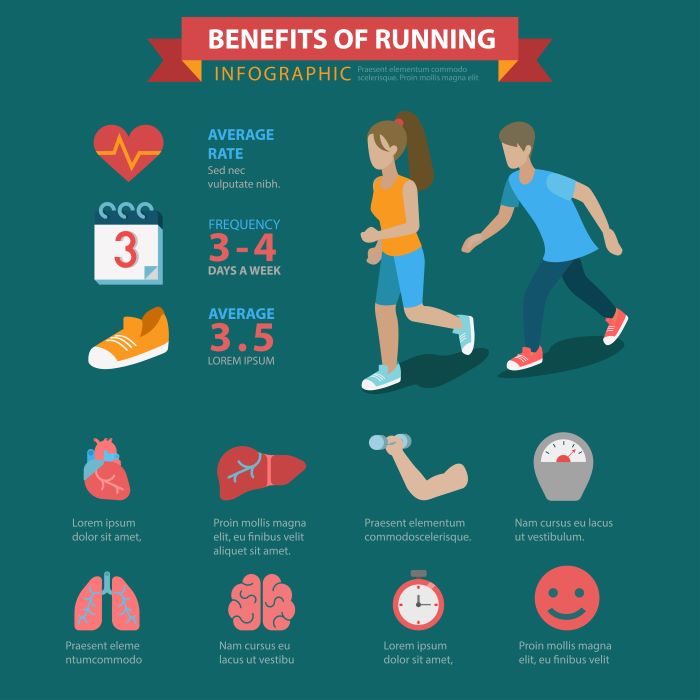To truly enhance your running experience, it’s vital to understand the core fitness components that contribute to your performance. These components include endurance, strength, flexibility, and balance. Each plays a significant role in how effectively you run, preventing injuries and improving your overall fitness.
Endurance is perhaps the most critical component for runners. It refers to your body’s ability to sustain prolonged physical activity. Developing endurance allows you to run longer distances without fatigue. Incorporating long runs and interval training into your routine can greatly enhance your aerobic capacity.
Strength training is equally important. It not only helps in improving your running efficiency but also strengthens your muscles, tendons, and ligaments, reducing the risk of injuries. Exercises such as squats, lunges, and core workouts can significantly contribute to your overall running strength.
Flexibility is often overlooked, yet it is essential for maintaining a full range of motion in your joints. Engaging in regular stretching and mobility exercises can prevent stiffness and enhance your running form.
Lastly, balance aids in stability during your runs, especially on uneven terrains. Incorporating balance exercises such as single-leg stands or stability ball workouts can improve your coordination and prevent falls.
By focusing on these fitness components, you can elevate your running routine and enjoy every step of your journey. Visit our website to learn more and get started today! Click here.
The Importance of Cardiovascular Endurance

Cardiovascular endurance refers to the ability of the heart, lungs, and blood vessels to supply oxygen to the working muscles during sustained physical activity. This vital component plays a crucial role in running, as it directly impacts your performance and overall health.
When you engage in running, your body demands a steady supply of oxygen to fuel your muscles. The stronger your cardiovascular system, the more efficiently it can deliver oxygen, allowing you to run longer and at a higher intensity. This increased capacity not only enhances your running experience but also contributes to better overall fitness.
Improved cardiovascular endurance results in numerous benefits, such as:
- Increased stamina: As your endurance improves, you can run for extended periods without experiencing fatigue.
- Enhanced recovery: A stronger cardiovascular system helps your body recover more quickly after workouts, allowing you to train more frequently.
- Weight management: Running is an effective way to burn calories, and better endurance means you can maintain a higher level of activity.
- Heart health: Regular cardiovascular exercise strengthens your heart muscle, reducing the risk of heart disease and other related conditions.
To build cardiovascular endurance, consider incorporating a mix of steady-state runs and interval training into your weekly routine. Over time, you will notice significant improvements in your running capacity, making each run more enjoyable and fulfilling.
Building Muscular Strength for Runners

Building muscular strength is essential for runners, as it enhances performance, improves running economy, and reduces the risk of injury. Strong muscles support your joints, provide stability, and enable you to maintain proper form throughout your runs.
When it comes to running, the primary muscle groups involved include the quadriceps, hamstrings, calves, glutes, and core. Strengthening these areas not only aids in propulsion but also helps in absorbing the impact of each stride. Here are some effective ways to build muscular strength:
- Strength training: Incorporate exercises like squats, lunges, deadlifts, and leg presses to target the lower body. Core exercises such as planks and Russian twists will also help improve overall stability.
- Bodyweight exercises: Utilize push-ups, pull-ups, and bodyweight squats to enhance upper and lower body strength without the need for equipment.
- Resistance bands: These can be an excellent tool for strength training, as they provide varying levels of resistance to help build muscle effectively.
- Plyometrics: Incorporating explosive movements such as box jumps and burpees can enhance power and strength, translating to improved running efficiency.
It’s crucial to integrate strength training into your routine at least two to three times a week. By doing so, you will not only build muscular strength but also improve your overall running performance and endurance. As you progress, remember to gradually increase the weights or resistance to continually challenge your muscles.
Enhancing Flexibility to Prevent Injuries

Enhancing flexibility is a vital component for runners, playing a crucial role in injury prevention, improving performance, and promoting overall well-being. Flexible muscles and joints allow for a greater range of motion, which is essential for achieving an efficient running stride.
Inflexible muscles can lead to tightness and discomfort, which may result in injuries such as strains, sprains, and muscle tears. To effectively enhance flexibility, consider incorporating the following practices into your routine:
- Dynamic stretching: Before your runs, engage in dynamic stretches like leg swings, arm circles, and hip openers. These movements warm up your muscles and prepare them for the activity ahead.
- Static stretching: After your runs, spend time on static stretches targeting major muscle groups. Hold each stretch for 15-30 seconds to improve flexibility and promote muscle recovery.
- Yoga: Incorporating yoga into your weekly routine can significantly enhance flexibility, balance, and strength. Poses like downward dog, pigeon pose, and runner’s lunge are particularly beneficial for runners.
- Foam rolling: Using a foam roller can help release muscle tightness and improve overall flexibility. Focus on areas like the calves, hamstrings, and quadriceps to alleviate tension.
By prioritizing flexibility training, you can improve your overall running experience while minimizing the risk of injuries. Aim to incorporate flexibility exercises at least three times a week to see significant improvements in your range of motion and comfort while running.
The Role of Speed and Agility in Running

The elements of speed and agility play a pivotal role in enhancing a runner’s performance, making them essential components of any comprehensive training program. Speed refers to the ability to move quickly over a distance, while agility involves the capacity to change direction rapidly and efficiently.
Integrating speed and agility training into your routine can yield several benefits:
- Improved race times: By enhancing your speed, you can cover distances in less time, allowing you to achieve personal bests in races. Incorporating interval training, such as sprints and tempo runs, can help boost your speed effectively.
- Increased power: Agility drills, such as shuttle runs and cone drills, enhance your body’s ability to generate power quickly, which is crucial for sprinting and navigating through varying terrains.
- Enhanced coordination: Training for speed and agility also improves your overall coordination, which is vital for maintaining balance and posture while running, especially on trails or uneven surfaces.
- Injury prevention: Agility training helps develop the muscles around your joints, providing better support and stability. This can reduce the risk of injuries, particularly those related to sudden movements or changes in direction.
Incorporating specific drills aimed at improving speed and agility can be as simple as adding short sprints to your runs, or engaging in agility ladder workouts. These exercises not only make your training more fun but also prepare you for various running scenarios, from road races to trail adventures.
How to Combine Components for Optimal Performance
To achieve optimal performance in running, it’s essential to integrate various fitness components into your training regimen. This holistic approach not only enhances your overall ability but also keeps your workouts engaging and effective.
Here are key strategies to combine different fitness components:
- Endurance and Strength: Start with a solid base of endurance through long-distance runs. Once you have established this foundation, incorporate strength training exercises such as squats and lunges to build muscle. This combination will help you maintain speed during longer runs.
- Flexibility and Mobility: Include dynamic stretching before your runs and static stretching afterward. This practice improves flexibility, which is vital for maintaining a full range of motion, thus reducing the risk of injury while enhancing performance.
- Speed and Agility: Integrate speed work, like interval training, into your routine to boost pace. Pair this with agility drills to improve your ability to maneuver swiftly, especially on trails where terrain changes can be unpredictable.
- Cross-Training: Don’t shy away from activities like cycling or swimming. These can enhance your cardiovascular fitness while allowing your running muscles to recover, thereby creating a balanced workout routine.
By thoughtfully combining these components, you can create a well-rounded training plan that not only prepares you for races but also fosters a love for running. Your journey towards achieving your personal best starts with a balanced approach to training.
Visit our website to learn more and get started today! Click here.


